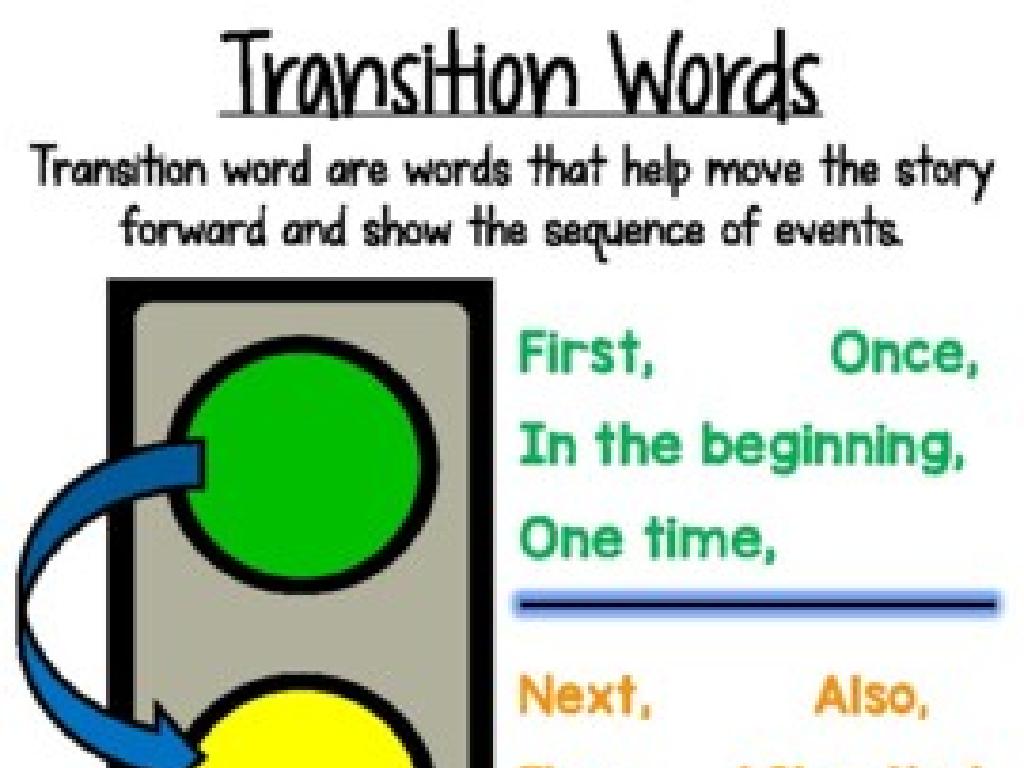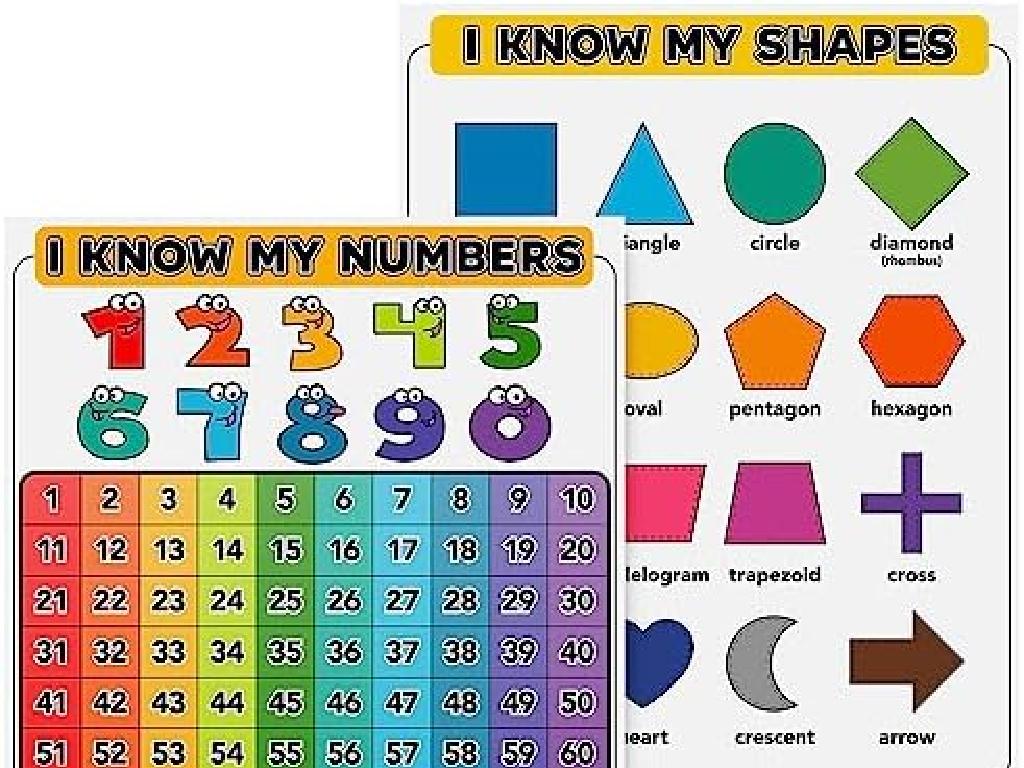Add And Subtract With Two-Digit Numbers Vertically
Subject: Math
Grade: Second grade
Topic: Mixed Operations: Two Digits
Please LOG IN to download the presentation. Access is available to registered users only.
View More Content
Welcome to Mixed Operations!
– Learn to add two-digit numbers
– Stack numbers and add each column
– Learn to subtract two-digit numbers
– Stack numbers and subtract each column
– Solve problems with vertical calculations
– Line up the numbers by place value
– Practice makes perfect math wizards
|
This slide introduces the concept of adding and subtracting two-digit numbers using vertical calculations. Emphasize the importance of lining up the numbers by their place value (tens and ones) to ensure accuracy. Demonstrate the process of carrying over (in addition) and borrowing (in subtraction) when the sum of the ones exceeds 9 or when subtracting a larger number from a smaller one in the ones place. Provide several examples and encourage students to practice along with you. The goal is to build confidence and accuracy in their ability to solve mixed operation problems with two-digit numbers.
Understanding Two-Digit Numbers
– Two parts: tens and ones
– First digit: number of tens
– If the first digit is 4, it means 40 or 4 tens
– Second digit: number of ones
– If the second digit is 3, it means 3 ones
– Adding and subtracting vertically
– Stack numbers and line up by place value before adding or subtracting
|
This slide introduces the concept of two-digit numbers to second-grade students, emphasizing the place value system. The tens and ones places are the foundation for understanding how to add and subtract two-digit numbers. It’s crucial for students to recognize that the first digit represents tens, which are groups of ten, and the second digit represents ones, single units. When teaching vertical addition and subtraction, ensure that students practice lining up numbers by their place values to avoid confusion. Use examples like ’43’ to illustrate that ‘4’ stands for 40 (four tens) and ‘3’ stands for 3 ones. This understanding is key to performing accurate arithmetic operations.
Adding Two-Digit Numbers Vertically
– Combining numbers to add
– Start with the ones place
– Add 3 (ones) + 5 (ones) = 8 (ones)
– Then add the tens place
– Add 2 (tens) + 1 (tens) = 3 (tens)
– Example: 23 + 15
– Stack numbers vertically & add: 23 + 15 = 38
|
This slide introduces students to the concept of adding two-digit numbers vertically. Emphasize that adding means combining numbers to get a larger number. Start with the ones place, which is the rightmost digit, and then move to the tens place, the second digit from the right. Use the example 23 + 15 to demonstrate the process. Write 23 above 15, aligning the digits by place value, and add each column starting from the right. The sum of the ones place is 8, and the sum of the tens place is 3, resulting in the final answer of 38. Encourage students to practice with different numbers and ensure they understand the importance of aligning the digits correctly.
Subtracting Two-Digit Numbers
– Subtraction means taking away
– Start with the ones, then tens
– Example: 54 – 29
– Subtract 9 from 4 in the ones place, borrow from the tens
– Remember to borrow if needed
– If the top number is smaller, borrow 1 from the next column
|
This slide introduces the concept of subtraction with two-digit numbers, emphasizing the process of ‘taking away.’ Begin by explaining that subtraction is like removing items from a group. Demonstrate the process step by step, starting with the ones place and moving to the tens. Use the example 54 – 29 to show how to handle situations where borrowing is necessary. Explain borrowing as ‘taking one from the next door neighbor’ to make the number larger. Provide several examples and encourage students to practice with different numbers. Prepare to guide them through the borrowing process, ensuring they understand why and how it’s done.
Carrying Over and Borrowing in Addition and Subtraction
– Understanding carrying over
– When ones > 9, we carry over to the tens place.
– Learning to borrow when subtracting
– If the top number is smaller, take from the tens place.
– Practice problems for carrying over
– Example: 27 + 38 (carry over the 1)
– Practice problems for borrowing
– Example: 52 – 29 (borrow 1 from the tens place)
|
This slide introduces the concepts of carrying over and borrowing, which are essential for adding and subtracting two-digit numbers vertically. When adding and the ones column adds up to more than 9, we carry over to the tens column. When subtracting and the top number in the ones column is smaller than the bottom number, we borrow from the tens column. Provide students with practice problems to apply these concepts. For carrying over, use an example like 27 + 38, where they carry the 1. For borrowing, use an example like 52 – 29, where they borrow from the 5. Encourage students to work through these problems step by step and to check their work.
Let’s Practice Together: Adding & Subtracting
– We’ll solve problems as a class
– Align numbers by place value
– Ones under ones, tens under tens
– Take your time to solve them
– Double-check your answers
– Look back over your work for mistakes
|
This slide is designed to engage the class in a collaborative problem-solving activity. Start by presenting a few two-digit addition and subtraction problems on the board. Guide the students to line up the numbers correctly, ensuring that the ones are under ones and tens are under tens, which is crucial for vertical calculations. Encourage them to work through the problems methodically and not to rush, as accuracy is more important than speed. After solving each problem, prompt them to review their work to catch any possible errors. This practice will help reinforce their understanding of place value and the importance of double-checking their work. Possible activities include pairing students to solve problems together, using manipulatives to represent the numbers physically, or creating a game where they can earn points for correct answers and proper alignment.
Activity Time: Math Puzzles!
– Try solving problems independently
– Use pencils for vertical calculations
– Line up the numbers by place value and add or subtract
– Solve puzzles together as a class
– We’ll work through examples as a group
– Assist classmates if you’re done early
– Sharing strategies helps everyone learn
|
This slide introduces an interactive activity where students will practice adding and subtracting two-digit numbers vertically. Provide a worksheet with a variety of problems. Encourage students to work independently first, using pencils to carefully align the numbers by place value. Once they’ve attempted the problems, go through the puzzles as a class, discussing different strategies. If some students complete their work early, they can be peer helpers, reinforcing their own understanding by teaching others. Possible activities: 1) Create a vertical addition puzzle, 2) Subtract using borrowing, 3) Mix of addition and subtraction problems, 4) Word problems requiring vertical calculations, 5) Fast finishers can create their own math puzzles for classmates.
Review: Adding and Subtracting Two-Digit Numbers
– Adding combines numbers
– Subtracting separates numbers
– Carrying over in addition
– When two digits add up to more than 9, we carry over to the next column.
– Borrowing in subtraction
– If the top number is smaller, we borrow from the next column.
|
This slide is a recap of our previous lessons on adding and subtracting two-digit numbers. Adding is the process of combining numbers to find out how much there is in total. Subtracting is the process of taking numbers apart to find out the difference. When adding and the sum of two digits is 10 or more, we carry over to the next place value. For example, in 27 + 19, we add 7 + 9 to get 16, put the 6 in the ones place, and carry over the 1 to the tens place. When subtracting and the top digit is smaller than the bottom digit, we borrow from the next column. For example, in 52 – 37, we borrow from the 5, which becomes a 4, and add 10 to the 2 to make it 12. Then we subtract 7 from 12. These concepts are fundamental for understanding more complex math operations as students progress.
Class Activity: Math Relay!
– Teams solve problems together
– Pass a baton after each problem
– Complete all problems to win
– Prizes for the winning team!
|
This activity is designed to encourage teamwork and reinforce the concept of adding and subtracting two-digit numbers vertically. Before starting, ensure that each team understands the rules and the process of vertical addition and subtraction. Prepare a set of problems for each team, ensuring they are appropriate for second-grade students. Demonstrate how to pass the baton safely and explain that each team member must contribute to solving the problems. The activity will not only make learning fun but also promote a healthy competitive spirit. Possible prizes could be extra recess time, a homework pass, or a special classroom privilege. Remember to celebrate all teams for participating and encourage a supportive environment where students cheer each other on.






